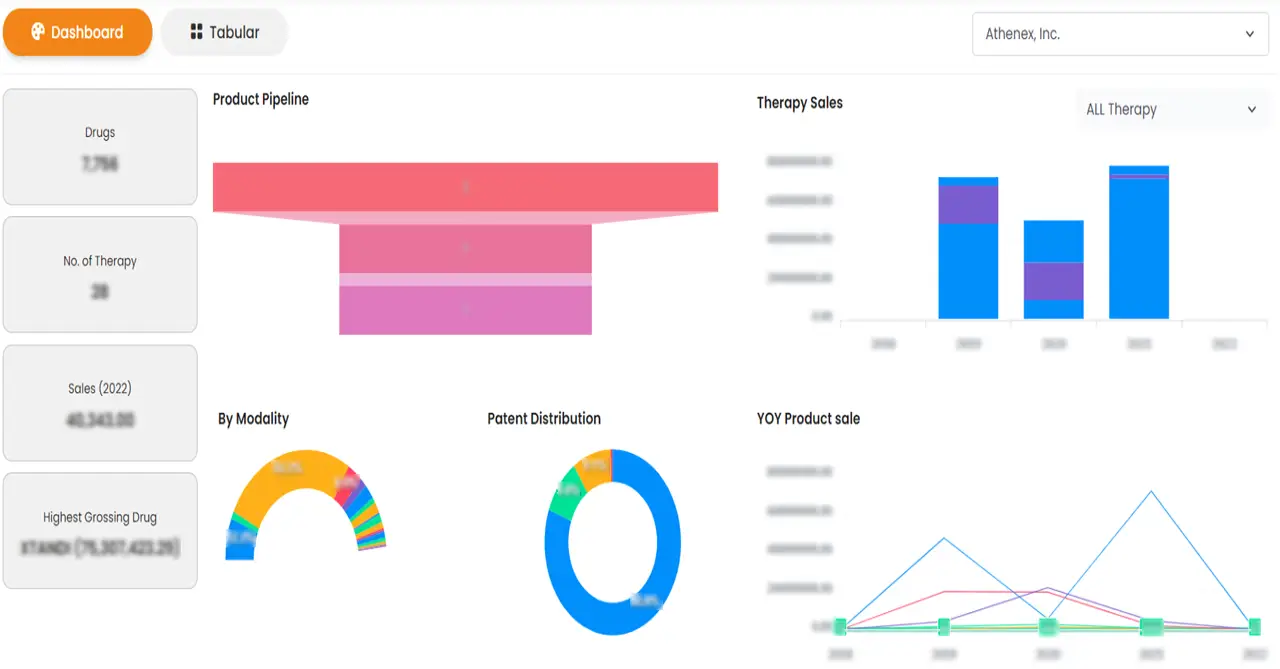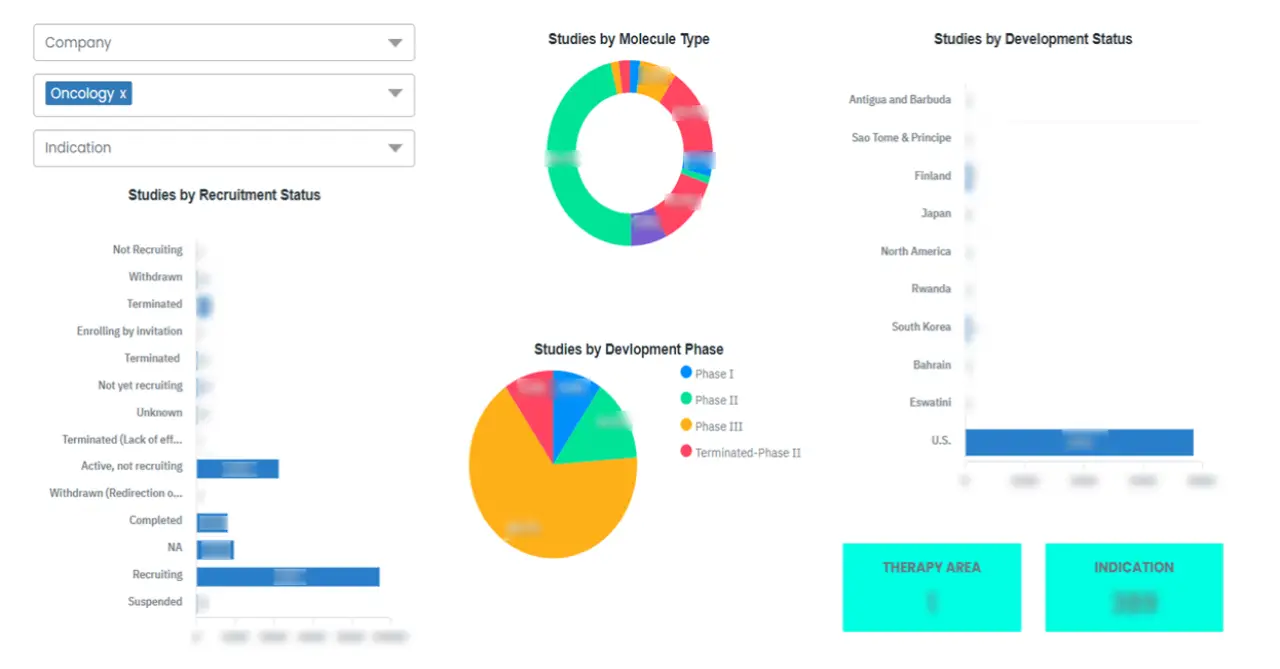世界の視神経脊髄炎治療市場の規模、シェア、傾向分析レポート
Market Size in USD Billion
CAGR :
% 
 USD
297.72 Million
USD
503.94 Million
2024
2032
USD
297.72 Million
USD
503.94 Million
2024
2032
| 2025 –2032 | |
| USD 297.72 Million | |
| USD 503.94 Million | |
|
|
|
>世界の視神経脊髄炎治療市場のセグメンテーション、タイプ別(アクアポリン-4抗体を伴う視神経脊髄炎スペクトラム障害、アクアポリン-4抗体を伴わない視神経脊髄炎スペクトラム障害)、治療タイプ別(薬物療法、血漿交換療法、免疫グロブリン療法)、薬剤別(C5タンパク質阻害剤、経口コルチコステロイド、非ステロイド免疫抑制剤、その他)、投与経路別(経口および注射)、エンドユーザー別(病院、在宅ケア、専門クリニック、その他)– 2032年までの業界動向と予測
視神経脊髄炎治療市場分析
視神経脊髄炎スペクトラム障害の罹患率の上昇と治療オプションの進歩により、視神経脊髄炎治療市場は勢いを増しています。視神経脊髄炎スペクトラム障害は、視神経と脊髄の重度の炎症を特徴とするまれな自己免疫疾患で、視力喪失や障害につながります。市場の最近の発展は、炎症プロセスに関与する主要なタンパク質を阻害するモノクローナル抗体など、疾患の根本的な病態生理学に特に対処した標的療法に焦点が当てられています。医療従事者と患者の間で視神経脊髄炎スペクトラム障害に対する認識が高まっていることから、効果的な治療オプションの需要が高まっています。さらに、進行中の臨床試験と研究により、潜在的な治療法のパイプラインが拡大しており、患者の転帰が向上することが期待されています。この疾患に対する理解が進むにつれて、市場は大幅な成長を遂げる態勢が整っており、製薬会社と医療提供者にとって、罹患した個人のニーズに合わせた革新的なソリューションを開発する機会が生まれます。
視神経脊髄炎治療市場規模
世界の視神経脊髄炎治療市場規模は、2024年に2億9,772万米ドルと評価され、2025年から2032年の予測期間中に6.80%のCAGRで成長し、2032年には5億394万米ドルに達すると予測されています。市場価値、成長率、セグメンテーション、地理的範囲、主要プレーヤーなどの市場シナリオに関する洞察に加えて、Data Bridge Market Researchがまとめた市場レポートには、詳細な専門家分析、患者の疫学、パイプライン分析、価格分析、規制枠組みも含まれています。
視神経脊髄炎治療市場の動向
「標的治療の開発」
視神経脊髄炎治療市場は、治療アプローチの革新と研究努力の増大により、急速に進化しています。注目すべき傾向は、視神経脊髄炎スペクトラム障害に関連する炎症プロセスを特異的に阻害するように設計された標的療法、特にモノクローナル抗体の開発です。これらの進歩により、治療の有効性と安全性が向上し、患者の転帰が改善される見込みです。さらに、精密医療の統合が勢いを増しており、個々の患者のプロファイルに基づいた個別の治療計画が可能になります。この障害の認識が高まり、より多くの臨床試験が開始されるにつれて、この衰弱性疾患に苦しむ人々へのケアの質を向上させる取り組みを反映して、市場は大幅な成長を遂げると予想されます。
レポートの範囲と視神経脊髄炎治療市場のセグメンテーション
|
属性 |
視神経脊髄炎治療の主要市場洞察 |
|
対象セグメント |
|
|
対象国 |
北米では米国、カナダ、メキシコ、ヨーロッパではドイツ、フランス、英国、オランダ、スイス、ベルギー、ロシア、イタリア、スペイン、トルコ、その他のヨーロッパ、ヨーロッパでは中国、日本、インド、韓国、シンガポール、マレーシア、オーストラリア、タイ、インドネシア、フィリピン、アジア太平洋地域 (APAC) ではその他のアジア太平洋地域 (APAC)、中東およびアフリカ (MEA) の一部としてサウジアラビア、UAE、南アフリカ、エジプト、イスラエル、中東およびアフリカ (MEA) の一部としてその他の中東およびアフリカ (MEA)、南米の一部としてブラジル、アルゼンチン、その他の南米 |
|
主要な市場プレーヤー |
F. ホフマン・ラ・ロシュ社(スイス)、アストラゼネカ社(英国)、テバ製薬工業社(イスラエル)、アレクシオン・ファーマシューティカルズ社(米国)、ビエラ・バイオ社(米国)、アンビル・バイオサイエンス社(米国)、オペクサ・セラピューティクス社(米国)、アリエン・ファーマシューティカルズ社(米国)、TGセラピューティクス社(米国)、ビオニュア社(スペイン) |
|
市場機会 |
|
|
付加価値データ情報セット |
Data Bridge Market Research がまとめた市場レポートには、市場価値、成長率、セグメンテーション、地理的範囲、主要プレーヤーなどの市場シナリオに関する洞察に加えて、専門家による詳細な分析、患者の疫学、パイプライン分析、価格分析、規制の枠組みも含まれています。 |
視神経脊髄炎治療市場の定義
Neuromyelitis optica treatment encompasses medical interventions aimed at managing neuromyelitis optica spectrum disorder, an autoimmune condition that causes inflammation of the optic nerves and spinal cord. Treatment typically includes immunosuppressive medications, monoclonal antibodies, corticosteroids, and plasma exchange therapy, focusing on reducing inflammation, alleviating symptoms, preventing relapses, and preserving neurological function to enhance patients' quality of life.
Neuromyelitis Optica Treatment Market Dynamics
Drivers
- Increasing Incidence of Neuromyelitis Optica
The increasing prevalence of neuromyelitis optica spectrum disorder is significantly contributing to the demand for effective treatment options, thereby driving market growth. As awareness of this rare autoimmune condition grows, more patients are being diagnosed and seeking medical interventions to manage their symptoms and improve their quality of life. This rising incidence necessitates the development and availability of targeted therapies and innovative treatment solutions. Healthcare providers are increasingly recognizing the importance of timely and effective management of the disorder, leading to an expanded market for therapeutic options. Consequently, pharmaceutical companies are motivated to invest in research and development to meet the escalating needs of patients, further propelling market growth.
- Rising Research and Clinical Trials
Ongoing clinical trials and research initiatives are crucial in expanding the pipeline of potential therapies for neuromyelitis optica spectrum disorder, thereby driving interest in the treatment market. These efforts are focused on developing innovative and targeted therapies that address the unique challenges of the condition, which can significantly improve treatment outcomes for patients. As new therapies emerge from clinical trials, they offer promising alternatives to traditional treatment options, enhancing the overall efficacy and safety of management strategies. Additionally, the increasing investment in research underscores the commitment of pharmaceutical companies and researchers to advance the understanding of neuromyelitis optica, fostering a dynamic environment that encourages the exploration of novel treatment approaches and further stimulating market growth.
Opportunities
- Rise of Telemedicine
The rise of telemedicine offers significant opportunities to enhance patient access to specialists and facilitate remote monitoring for individuals with neuromyelitis optica spectrum disorder. By leveraging telehealth platforms, patients can easily consult with neurologists and other healthcare professionals from the comfort of their homes, eliminating barriers related to travel and scheduling. This increased accessibility allows for timely interventions and regular follow-ups, which are crucial for managing the condition effectively. Additionally, remote monitoring technologies enable healthcare providers to track patients' health data in real-time, facilitating personalized treatment adjustments and proactive management of symptoms. As a result, the integration of telemedicine in neuromyelitis optica care improves patient outcomes and expands the market potential for innovative healthcare solutions.
- Development of New and Innovative Therapies
There is a substantial opportunity for the development of new and innovative therapies, such as monoclonal antibodies and small molecules, that specifically target the underlying mechanisms of neuromyelitis optica spectrum disorder. These advanced therapies can offer more effective treatment options by addressing the root causes of the disease, potentially improving patient outcomes significantly. The growing understanding of the pathophysiology of neuromyelitis optica paves the way for targeted interventions that can reduce disease activity and prevent relapses. Furthermore, as research continues to uncover novel therapeutic pathways, pharmaceutical companies are encouraged to invest in developing these promising treatments, thus expanding their market presence and catering to the evolving needs of patients. This innovation enhances treatment options and contributes to a more personalized approach to managing neuromyelitis optica.
Restraints/Challenges
- Competing Therapeutic Options
The presence of alternative treatments for autoimmune disorders poses a significant challenge for therapies targeting neuromyelitis optica spectrum disorder. Established treatments for other autoimmune conditions may overshadow neuromyelitis optica therapies, making it difficult for newer and potentially more effective treatments to gain market share. Physicians often prioritize familiar options that have a proven track record, leading to hesitance in adopting novel therapies for neuromyelitis optica. This competition can result in limited awareness of the benefits and unique mechanisms of action of neuromyelitis optica treatments, ultimately impacting patient access and reducing the incentive for pharmaceutical companies to invest in research and development in this area. Consequently, the market struggles to achieve its full potential despite the need for effective treatment options.
- High Cost of Treatments
The significant expenses associated with innovative therapies, such as monoclonal antibodies, present a considerable restraint in the neuromyelitis optica treatment market. These advanced therapies often come with high price tags, which can limit patient access, especially in regions with constrained healthcare budgets. Many healthcare providers may hesitate to prescribe these costly options due to concerns about patients' ability to afford them or lack of insurance coverage. This financial barrier affects treatment adherence and contributes to disparities in healthcare access, ultimately hindering the overall effectiveness of treatment strategies for neuromyelitis optica spectrum disorder. As a result, the high costs associated with innovative therapies remain a critical challenge for market growth and patient care.
This market report provides details of new recent developments, trade regulations, import-export analysis, production analysis, value chain optimization, market share, impact of domestic and localized market players, analyses opportunities in terms of emerging revenue pockets, changes in market regulations, strategic market growth analysis, market size, category market growths, application niches and dominance, product approvals, product launches, geographic expansions, technological innovations in the market. To gain more info on the market contact Data Bridge Market Research for an Analyst Brief, our team will help you take an informed market decision to achieve market growth.
Neuromyelitis Optica Treatment Market Scope
The market is segmented on the basis of treatment type, drugs, route of administration, and end-users. The growth amongst these segments will help you analyse meagre growth segments in the industries and provide the users with a valuable market overview and market insights to help them make strategic decisions for identifying core market applications.
Types
- Neuromyelitis Optica Spectrum Disorder with Aquaporin-4 Antibodies
- Neuromyelitis Optica Spectrum Disorder without Aquaporin-4 Antibodies
Treatment Type
- Medication
- Plasma Exchange Therapy
- Immunoglobulin Therapy
Drugs
- C5 Protein Inhibitor
- Oral Corticosteroid
- Non-Steroid Immunosuppressive Drugs
- Others
Route of Administration
- Oral
- Injectable
End-Users
- Hospitals
- Homecare
- Specialty Clinics
- Others
Neuromyelitis Optica Treatment Market Regional Analysis
The market is analysed and market size insights and trends are provided by country, treatment type, drugs, route of administration, and end-users as referenced above.
The countries covered in the market report are U.S., Canada and Mexico in North America, Germany, France, U.K., Netherlands, Switzerland, Belgium, Russia, Italy, Spain, Turkey, Rest of Europe in Europe, China, Japan, India, South Korea, Singapore, Malaysia, Australia, Thailand, Indonesia, Philippines, Rest of Asia-Pacific (APAC) in the Asia-Pacific (APAC), Saudi Arabia, U.A.E., South Africa, Egypt, Israel, Rest of Middle East and Africa (MEA) as a part of Middle East and Africa (MEA), Brazil, Argentina and Rest of South America as part of South America.
North America leads the neuromyelitis optica treatment market, primarily driven by heightened awareness regarding the importance of early diagnosis and treatment options. This growing recognition among healthcare professionals and patients alike has fostered an environment conducive to new product launches and advancements in therapeutic approaches. As a result, the region continues to establish itself as a key player in the development and accessibility of effective treatments for neuromyelitis optica spectrum disorder.
Asia-Pacific region is anticipated to experience significant growth from 2025 to 2032, largely due to the expanding patient population affected by neuromyelitis optica spectrum disorder. This increase in cases is prompting a greater demand for effective treatment options and healthcare services. As awareness and access to medical care improve, the region is poised to become a prominent market for neuromyelitis optica therapies.
The country section of the report also provides individual market impacting factors and changes in regulation in the market domestically that impacts the current and future trends of the market. Data points such as down-stream and upstream value chain analysis, technical trends and porter's five forces analysis, case studies are some of the pointers used to forecast the market scenario for individual countries. Also, the presence and availability of global brands and their challenges faced due to large or scarce competition from local and domestic brands, impact of domestic tariffs and trade routes are considered while providing forecast analysis of the country data.
Neuromyelitis Optica Treatment Market Share
The market competitive landscape provides details by competitor. Details included are company overview, company financials, revenue generated, market potential, investment in research and development, new market initiatives, global presence, production sites and facilities, production capacities, company strengths and weaknesses, product launch, product width and breadth, application dominance. The above data points provided are only related to the companies' focus related to market.
Neuromyelitis Optica Treatment Market Leaders Operating in the Market Are:
- F. Hoffmann-La Roche Ltd (Switzerland)
- AstraZeneca (U.K.)
- Teva Pharmaceutical Industries Ltd. (Israel)
- Alexion Pharmaceuticals, Inc (U.S.)
- Viela Bio (U.S.)
- Anvil Biosciences (U.S.)
- Opexa Therapeutics, Inc (米国)
- アリエン・ファーマシューティカルズ LLC (米国)
- TGセラピューティクス社(米国)
- ビオヌール(スペイン)
視神経脊髄炎治療市場の最新動向
- 2024 年 3 月、アストラゼネカの Ultomiris (ラブリズマブ-cwvz) は、米国食品医薬品局 (FDA) から、米国で推定 6,000 人の成人が罹患している希少な自己免疫疾患である視神経脊髄炎スペクトラム障害の治療薬として承認されました。この承認は、この困難な疾患を抱える患者にとって治療選択肢の大きな進歩を意味します。NMOSD に的を絞った治療を提供することで、アストラゼネカは十分な治療を受けていないこの集団の患者の転帰と生活の質を改善することを目指しています。
- 2024年3月、アストラゼネカのアレクシオンは、ウルトミリスの4番目の適応症の承認を取得し、希少な自己免疫疾患である視神経脊髄炎スペクトラム障害の治療に利用できるようになると発表しました。このマイルストーンは、さまざまな重篤な自己免疫疾患に対処するウルトミリスの汎用性が高まっていることを強調しています。この新しい適応症により、アストラゼネカはこの困難な疾患に苦しむ患者の治療オプションを強化し、より良い健康成果を得る可能性を高めることを目指しています。
- 2023年10月、アムジェンは第3相N-MOmentum臨床試験から新たな知見を発表しました。この知見は、視神経脊髄炎スペクトラム障害(NMOSD)に関連する炎症性バイオマーカーの存在に関する貴重な洞察を提供します。これらの知見は、疾患関連発作を最小限に抑えるUplizna(イネビリズマブ)の「持続的な影響」をさらに強化します。この研究は、効果的な治療オプションとしてのUpliznaの可能性を強調し、NMOSDに関連する根本的な炎症プロセスを標的とすることで、病状を管理し、患者の転帰を改善する役割を強調しています。
SKU-
世界初のマーケットインテリジェンスクラウドに関するレポートにオンラインでアクセスする
- インタラクティブなデータ分析ダッシュボード
- 成長の可能性が高い機会のための企業分析ダッシュボード
- カスタマイズとクエリのためのリサーチアナリストアクセス
- インタラクティブなダッシュボードによる競合分析
- 最新ニュース、更新情報、トレンド分析
- 包括的な競合追跡のためのベンチマーク分析のパワーを活用
調査方法
データ収集と基準年分析は、大規模なサンプル サイズのデータ収集モジュールを使用して行われます。この段階では、さまざまなソースと戦略を通じて市場情報または関連データを取得します。過去に取得したすべてのデータを事前に調査および計画することも含まれます。また、さまざまな情報ソース間で見られる情報の不一致の調査も含まれます。市場データは、市場統計モデルと一貫性モデルを使用して分析および推定されます。また、市場シェア分析と主要トレンド分析は、市場レポートの主要な成功要因です。詳細については、アナリストへの電話をリクエストするか、お問い合わせをドロップダウンしてください。
DBMR 調査チームが使用する主要な調査方法は、データ マイニング、データ変数が市場に与える影響の分析、および一次 (業界の専門家) 検証を含むデータ三角測量です。データ モデルには、ベンダー ポジショニング グリッド、市場タイムライン分析、市場概要とガイド、企業ポジショニング グリッド、特許分析、価格分析、企業市場シェア分析、測定基準、グローバルと地域、ベンダー シェア分析が含まれます。調査方法について詳しくは、お問い合わせフォームから当社の業界専門家にご相談ください。
カスタマイズ可能
Data Bridge Market Research は、高度な形成的調査のリーダーです。当社は、既存および新規のお客様に、お客様の目標に合致し、それに適したデータと分析を提供することに誇りを持っています。レポートは、対象ブランドの価格動向分析、追加国の市場理解 (国のリストをお問い合わせください)、臨床試験結果データ、文献レビュー、リファービッシュ市場および製品ベース分析を含めるようにカスタマイズできます。対象競合他社の市場分析は、技術ベースの分析から市場ポートフォリオ戦略まで分析できます。必要な競合他社のデータを、必要な形式とデータ スタイルでいくつでも追加できます。当社のアナリスト チームは、粗い生の Excel ファイル ピボット テーブル (ファクト ブック) でデータを提供したり、レポートで利用可能なデータ セットからプレゼンテーションを作成するお手伝いをしたりすることもできます。















